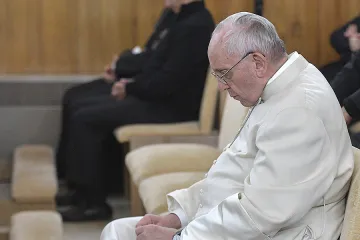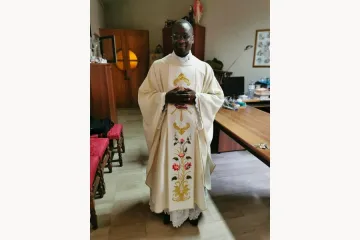Rome, Italy, Nov 10, 2021 / 14:00 pm
New data shows that in 2020, 8.3% of Italy’s diocesan and religious priests were not Italian, while the number of Italian Catholic priests who are missionaries in foreign countries has continued to fall.
Data from the Central Institute for the Support of Clergy, which is connected with the Italian bishops’ conference, found that the total number of priests in Italy in 2020 was 31,793.
The number is down 16.5% from 1990, with a fall of 11% in just the last decade. Meanwhile, the number of foreign-born priests serving in Italy has increased by more than tenfold in 30 years, from 204 in 1990 to 2,631 in 2020.
The average age of Italian priests has also increased slightly to 61.8, while the average age of non-Italian priests serving in Italy is 46.7.
The highest number of foreign-born priests are found in the central regions of Abruzzo and Lazio, which includes the city of Rome, as well as the north-central region of Tuscany.
In 2020, only 348 Italian priests were serving as foreign missionaries, 1.1% of the total, down by almost half from 630 in 2000.
The year 2020 also saw an increase in the mortality of priests in Italy: 958 priests died last year, while 742 died in 2019.
The increase in deaths seems likely to have been due to COVID-19, since higher than average deaths were recorded during Italy’s first and second waves of the coronavirus.
There are 25,595 Catholic parishes but only 15,133 parish pastors in Italy, which has a total population of around 60 million. There is one pastor for every 4,160 inhabitants.
“These figures should be no cause for alarm,” said Fr. Michele Gianola, under-secretary of the Italian bishops’ Conference (CEI) and director of the CEI National Office for the Pastoral Care of Vocations.
Quoted by AgenSIR, the news agency of the Italian bishops’ conference, Gianola added that the figures about priests “should be examined seriously because they touch on the issue of vocations potential in our Italian churches, on the prospects of youth and school pastoral ministry, and on the life and ministry of priests and communities of consecrated life.”
“They echo the concern expressed by Pope Francis in his address to the 71st general assembly of the Italian bishops’ conference on May 21, 2018, when he expressed his ‘concern regarding the hemorrhage of vocations,’” the priest added.
“In this respect, stopgap solutions have proved to be too precarious in terms of ensuring a proper response. Indeed, medium-term or even short-term perspectives may stifle the community’s potential to generate vocations.”
“It must be remembered that vocations are engendered by our mother Church; at times, this generative capacity is forgotten or neglected.”






